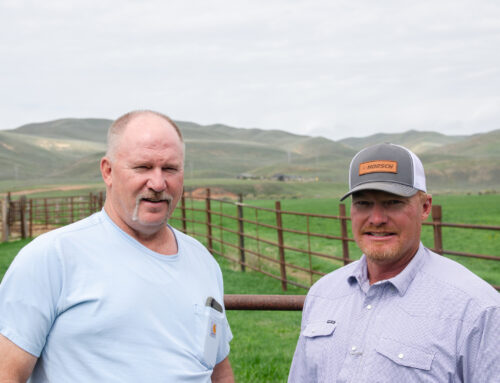Sustaining tomorrow: Get to know three individuals taking environmental action at CWRU
June 6, 2025
Each year, World Environment Day (June 5) calls on people worldwide to raise awareness and take action to protect the planet—and at Case Western Reserve University, that spirit is alive year-round.
From groundbreaking environmental research and campus sustainability programs led by the Office of Energy and Sustainability to partnerships with local initiatives, those part of the CWRU community actively work toward a greener future.
To highlight environment-related work happening at CWRU, The Daily spoke with three faculty and staff members, who shared personal insights into how their research, teaching and community engagement help foster change and create lasting impacts on campus and beyond.
Read on to get to know them.

AW Omta
Visiting assistant professor, Department of Earth, Environmental and Planetary Sciences
Throughout the academic year, AW Omta’s work weeks are a mix of teaching, mentoring, grading and lecture preparation for courses such as Weather and Climate, Introduction to Oceanography, and Climate Change and Carbon Cycle. During the last three years, Omta has also taught the Introduction to Environmental Thinking course, which prepares students for more specialized courses in biology, religion, history, nutrition and economics and gain knowledge to become environmental leaders.
When he’s not in the classroom or meeting with students, Omta dedicates his time conducting research related to global warming—an environmental issue he’s most passionate about.
Some of his key focuses include improving marine biogeochemical models to better predict how marine ecosystems respond to climate change, learning how the ocean absorbs human-produced carbon and comparing changes in the carbon cycle between the Ice Age and interglacial time periods.
“Given the potentially detrimental effects of climate change, it is important for climate models to be as accurate as possible,” said Omta, whose research findings were published in Nature Communications last fall. “Carbon cycle models form a key component of climate models, so improving their accuracy should ultimately also improve the accuracy of climate models.”

Ashlei Cannon
Department assistant, Environmental Health and Safety (EHS), UGEN
As a child, Ashlei Cannon naturally gravitated toward activities that led her to protect the environment, such as assembling a bike-powered generator to fuel homes for a science fair project. This passion was later reinforced by her participation in community-focused environmental work for AmeriCorps’ City Year program, where she helped build playgrounds, planted gardens and organized local cleanups.
Driven by a natural curiosity about how things work and a passion for protecting people and the environment, Cannon found her way to CWRU’s Environmental Health and Safety (EHS) office. There, she helps oversee chemical waste disposal, coordinates safety training, and supports the research efforts of students and faculty across departments ranging from anatomy and biology to chemistry and physics.
“We’ve seen what happens when hazardous materials aren’t handled properly and safety is just one of those things that is a necessity in every environment,” she said. “Beyond compliance, we’re setting an example, especially for students, of what responsible environmental practices look like in action.
In her role, Cannon also helps local youth groups prepare to volunteer in summer labs at CWRU by ensuring their training and safety paperwork is in order.

Peter Whiting
Professor, Department of Earth, Environmental and Planetary Sciences, College of Arts and Sciences
As the first professor to teach the weather and climate course at CWRU, Peter Whiting channels his academic roots in geology and previous experience as an environmental consultant to better understand how water sustains both ecosystems and human life.
“There is something about being on, in or near the water that is soothing, refreshing and satisfying,” said Whiting, who is director of CWRU’s environmental studies program. “I care about water and its nourishment of the environment, our society and our souls.”
When Whiting first arrived on campus, he sought to find answers to critical questions he had, such as how much water a river needs, how far fine sediments and pollutants travel before settling and ways to classify different landscapes based on their sensitivities to land use practice.
Today, these questions shape how Whiting approaches environmental challenges and his research. He studies how sediment moves through rivers and its implications for agriculture, water quality, fisheries, safety, aesthetics and cultural heritage. But, what excites him most is using his understanding of how the environment works to help others—whether students, communities or policymakers—make informed decisions that better the world.
Search
RECENT PRESS RELEASES
Related Post



